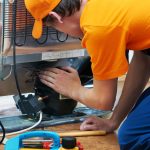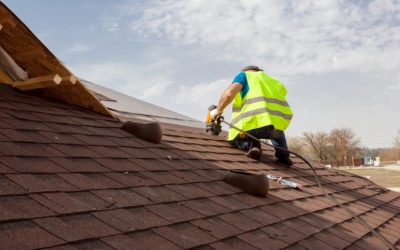When you are running a business, the last thing you want to worry about is the roof. Unfortunately, some commercial roofs aren’t all that reliable. Part of the problem is the low pitched roofing methods that are used. Don’t misunderstand, low sloped roofs are a great, low cost roofing solution. They allow reasonably smooth surfaces that are perfect for installing heating, cooling and refrigeration devices on. The problem comes when people walk on them or drag tools and equipment around on them. Most low sloped roofs are simple systems that have a layer of decking covered with roofing felt or tar paper. This is then sealed with hot tar or a similar bitumen based product that is then covered with an aggregate, typically gravel. This is known as built-up-roofing (BUR). It is important to have an expert in Commercial Roofing Services inspect this type of roof on a regular basis.
Another problem that low pitched roofs have is pooling. Pooling is puddles of water that collect on the roof when the decking sags or the aggregate get too thin. By itself, pooling isn’t bad as long as the weight from the puddles isn’t very much. The problem comes in when the tar or petroleum based coatings dry out or the aggregate damages the roof membrane. Pooling can result in leaks that ruin the decking or otherwise damage your building and the things inside. Roofing inspections can catch many of these problems, but repairing them usually requires patching the roof or applying new tar.
Commercial Roofing Services can provide several alternatives to the BUR roof. Some of the most common include membranes like EPDM (ethylene propylene diene monomer). This is a rubber based membrane that offers excellent protection, but may not be suitable for all environments. Other membrane materials include PVC (Polyvinyl Chloride), TPE (Thermoplastic Polyolefin Elastomer) and similar plasticized polymers. These are typically single ply products that are sealed using heat generated seams and custom fitting around roofing details. They can be placed using mechanical fasteners, specific epoxies, ballasted or loosely laid. One interesting option that can also provide a bit of extra insulation is foam roofing. The materials for these roofs are mixed on site and sprayed on the roof decking. Typical depth is about three to four inches. The result is a durable roof that can be quickly repaired and painted to reflect solar rays.
For further details click here.







